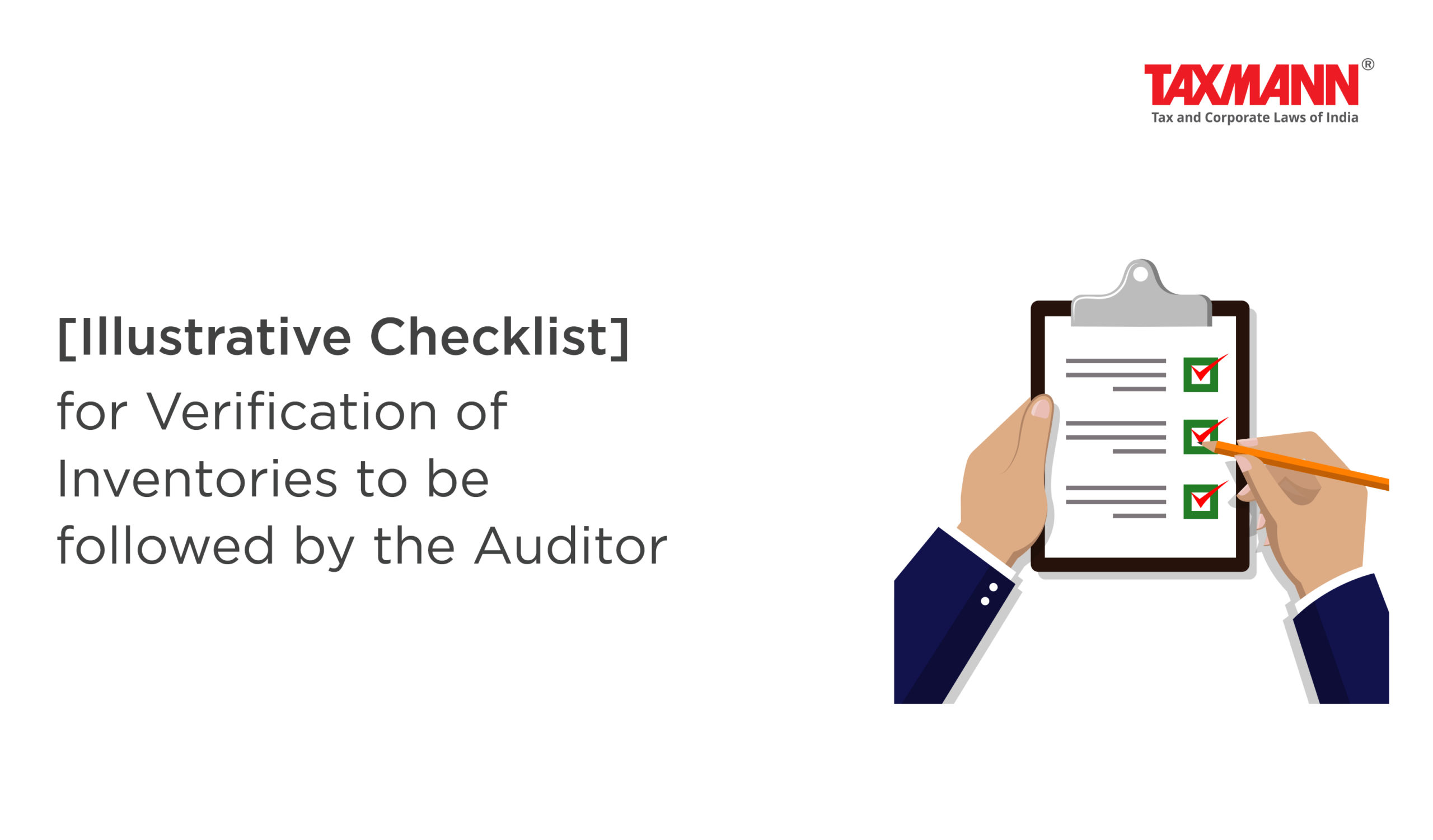[Illustrative Checklist] for Verification of Inventories to be followed by the Auditor
- News|Blog|Account & Audit|
- 2 Min Read
- By Taxmann
- |
- Last Updated on 25 May, 2023

The verification of inventories is a crucial aspect of the auditor’s responsibilities in assessing the accuracy and reliability of financial statements. A well-designed and executed audit procedure ensures that inventories are properly valued, accounted for, and disclosed in the financial statements. To assist auditors in performing a thorough inventory audit, an illustrative checklist has been prepared. This checklist outlines key areas and procedures that auditors should consider while verifying inventories. It serves as a helpful tool in organizing the audit process and ensuring that all relevant aspects are adequately addressed. The following checklist covers various stages, including physical verification, valuation, disclosure, internal controls, and analytical review procedures. By following this checklist, auditors can enhance the effectiveness and efficiency of their inventory audits while meeting professional standards and regulatory requirements.
I. Does the auditor ensure that the entities maintain detailed stock records in the form of stores/stock ledgers, which include information about receipts, issues, and balances for each major item
II. Does the auditor determine the level of examination required based on the specific facts and circumstances of each case
III. Does the auditor encounter situations where the entity lacks detailed stock records, apart from basic records related to purchases and sales
IV. Does the extent of the auditor’s attendance at stock-taking depend on their assessment of the effectiveness of internal control procedures, as well as the results of their examination of the stock records maintained by the entity and the analytical review procedures
V. Is the auditor expected to conduct test counts to ensure the effectiveness of the count procedures
Click Here To Read The Full Story
Disclaimer: The content/information published on the website is only for general information of the user and shall not be construed as legal advice. While the Taxmann has exercised reasonable efforts to ensure the veracity of information/content published, Taxmann shall be under no liability in any manner whatsoever for incorrect information, if any.

Taxmann Publications has a dedicated in-house Research & Editorial Team. This team consists of a team of Chartered Accountants, Company Secretaries, and Lawyers. This team works under the guidance and supervision of editor-in-chief Mr Rakesh Bhargava.
The Research and Editorial Team is responsible for developing reliable and accurate content for the readers. The team follows the six-sigma approach to achieve the benchmark of zero error in its publications and research platforms. The team ensures that the following publication guidelines are thoroughly followed while developing the content:
- The statutory material is obtained only from the authorized and reliable sources
- All the latest developments in the judicial and legislative fields are covered
- Prepare the analytical write-ups on current, controversial, and important issues to help the readers to understand the concept and its implications
- Every content published by Taxmann is complete, accurate and lucid
- All evidence-based statements are supported with proper reference to Section, Circular No., Notification No. or citations
- The golden rules of grammar, style and consistency are thoroughly followed
- Font and size that’s easy to read and remain consistent across all imprint and digital publications are applied



 CA | CS | CMA
CA | CS | CMA
